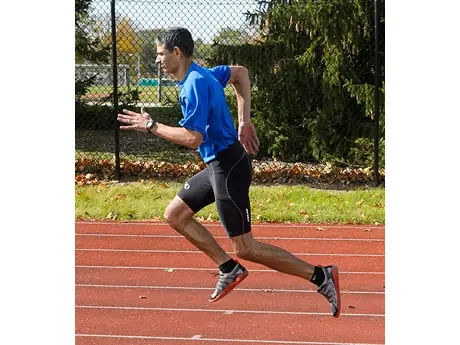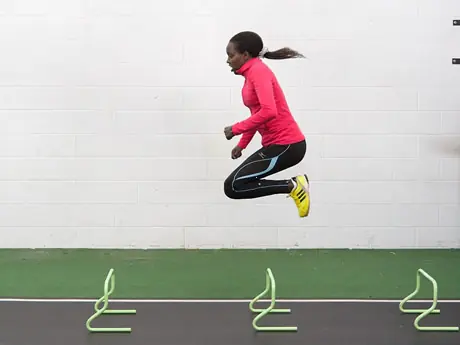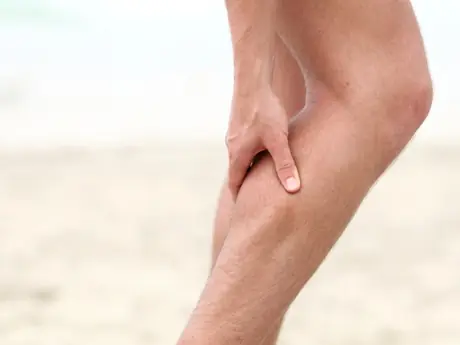Hop as quickly as possible for 20 meters, or 66 feet, on one foot, emphasizing extremely quick contact with the ground and forceful forward explosions each time the foot hits the ground. Without stopping or resting, hop 20 more meters on the other foot. Without interruption, repeat the exercise on the first foot and then the other foot. Recover by doing one minute of light jogging. Repeat this hopping and recovery sequence five more times.
More: 7 Best Plyometric Exercises to Improve Running Economy
A key progression with sprint hopping is to begin performing some of the reps on a hill. Start with a gently sloping incline of about three percent and gradually work up to a 10 percent incline, if possible, and hop both uphill and downhill. Maintain good form and balance at all times and avoid the temptation to look down at the hopping foot.

Position eight hurdles in a row, 45 inches apart, with the height of each hurdle set at 23 inches. Starting from one end, jump over each hurdle, landing and taking off on two legs until all eight hurdles have been cleared. Maintain continuous movement. Minimize ground-contact time with each landing, and try to be as explosive as possible. Once you have cleared the eighth hurdle, jog back to the beginning point and repeat four more times for five reps in all. Avoid taking little hops between hurdles and making more than one contact between hurdles. This exercise may also be performed on one leg at a time as a progression.

Running Science is a one-of-a-kind resource that offers the most advanced and in-depth coverage on running. In addition to providing detailed information on strength-training exercises for runners, it includes a wealth of insights distilled from great sport and exercise scientists, coaches and runners. The easily comprehended repository of running research offers an array of the most credible and widely used training principles and programs, and is a celebration of the latest science-based know-how of running. It is available in bookstores everywhere or online at www.HumanKinetics.com.
More: How Do I Run a Faster 5K?
 Sign up for your next 5K.
Sign up for your next 5K. - 3
- of
- 3
About the Author
Owen Anderson
Get ACTIVE on the Go


Couch to 5K®
The best way to get new runners off the couch and across the finish line of their first 5K.
Available for iOS | Android






Discuss This Article